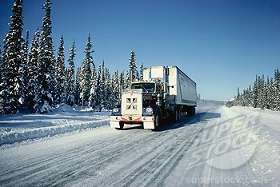Confirmation Of Western Express Details?
Topic 32682 | Page 1
All you have to do is get the recruiter to provide you that answer in an email. They will make sure it's accurate when written.
Who's the recruiter? Being nosy! I kind of know one them.

Who's the recruiter? Being nosy! I kind of know one them.
Campbell
Talk to Chad Montgomery!
I forgot to ask but after 3 months and I begin to make experienced driver pay, is their still a sliding pay scale? Meaning if the load is over 600 miles I still get less CPM?
That's correct. The sliding scale is just part of their pay package. Many carriers do it that way. Drivers often complain they are just getting short loads and not making good money. The truth is, short loads actually pay higher freight rates. The trucking companies need a mix of all kinds of freight and lengths of loads. They can build a higher average revenue per mile by using that strategy.
It's not a ploy to punish the newbies. It's actually a way to be able to pay the driver more for the higher paying loads. If you can run a good string of short haul drop & hook loads you can make some great money with those sliding pay scales.
CPM:
Cents Per Mile
Drivers are often paid by the mile and it's given in cents per mile, or cpm.
HOS:
Hours Of Service
HOS refers to the logbook hours of service regulations.
I forgot to ask but after 3 months and I begin to make experienced driver pay, is their still a sliding pay scale? Meaning if the load is over 600 miles I still get less CPM?
That's correct. The sliding scale is just part of their pay package. Many carriers do it that way. Drivers often complain they are just getting short loads and not making good money. The truth is, short loads actually pay higher freight rates. The trucking companies need a mix of all kinds of freight and lengths of loads. They can build a higher average revenue per mile by using that strategy.
It's not a ploy to punish the newbies. It's actually a way to be able to pay the driver more for the higher paying loads. If you can run a good string of short haul drop & hook loads you can make some great money with those sliding pay scales.
We have a varied pay rate by load length, it works out very advantageous for running several short loads together just as described. If one is efficient, they effectively get paid more per mile. I prefer the 500 mile loads strung together.
CPM:
Cents Per Mile
Drivers are often paid by the mile and it's given in cents per mile, or cpm.
HOS:
Hours Of Service
HOS refers to the logbook hours of service regulations.New Reply:
New! Check out our help videos for a better understanding of our forum features

















Preview:








 TT On Facebook
TT On Facebook
Hey all, I spoke with the recruiter at western express.
However I would like to confirm what he said with any western express drivers here because you guys wouldn’t lie to me right lol.
Can any Western Express drivers confirm this information:
- Western Express Pay is .42 CPM but any load over 600 miles is .34 CPM.
- Anything after 2000 miles is .50 CPM
- After 3 months, driver pay increases to .50 CPM (Regional) and .46 CPM (OTR) which is experienced driver pay.
- Also, I forgot to ask but after 3 months and I begin to make experienced driver pay, is their still a sliding pay scale? Meaning if the load is over 600 miles I still get less CPM?
Regional:
Regional Route
Usually refers to a driver hauling freight within one particular region of the country. You might be in the "Southeast Regional Division" or "Midwest Regional". Regional route drivers often get home on the weekends which is one of the main appeals for this type of route.
OTR:
Over The Road
OTR driving normally means you'll be hauling freight to various customers throughout your company's hauling region. It often entails being gone from home for two to three weeks at a time.
CPM:
Cents Per Mile
Drivers are often paid by the mile and it's given in cents per mile, or cpm.